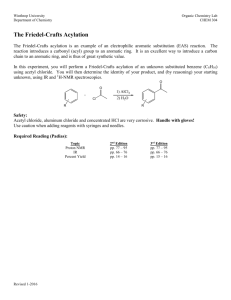This gave calculated values of 59 1 recovery and 40 9 error.
Extraction of caffeine from tea lab report conclusion.
Elizabeth bellizio tyler hamby lisa nguyen.
In this experiment caffeine was extracted from tea leaves then purified using sublimation.
Because caffeine is water soluble and is a base sodium carbonate must be added to the.
The caffeine was evaporated and appeared in yellowish form.
Extraction of caffeine from tea.
Sodium carbonate and hot water were added to the tea bags and was let to stand for about 7 minutes in order to bring the caffeine molecules out of the tea bags and into the aqueous solution.
Objectives introduction results and discussion conclusion and.
Using the proper extraction methods the caffeine within a tea bag could potentially be isolated to yield a pure solid.
The extraction method was done by mixing a tea with hot water to make a tea solution.
Caffeine has a greater affinity for methylene chloride and will easily dissolve in this solvent over water.
Anhydrous calcium chloride pellets were used to dry the solution and emulsion layer and the dcm was then decanted.
View lab report organic chemistry lab report distillation from chemistry 12 at national university extraction of caffeine from tea lab report of singapore.
Conclusion in this experiment the caffeine was extracted from the tea bag.
Caffeine can be extracted from tea by its ability to be better dissolved in dichloromethane than water.
A pure product of 065 g caffeine was obtained.
However caffeine is not the only organic substance.
The caffeine from the tea leaves was obtained by doing the extraction method.
The purpose of this experiment was to perform a liquid liquid extraction method to extract the caffeine from the tea bags that were provided and then recrystallize the caffeine.
The percentage yield of caffeine is 89 98.
The solution was then mixed with sodium carbonate.
To do so caffeine must be introduced to a solvent that is both volatile and insoluble to water.
Sodium carbonate was used because sodium carbonate acts as a base.
The base converts the.
Lab report 5 final copy grade.
In this experiment a solid liquid extraction method was used first to extract the caffeine room the tea leaves tea bags to by dissolving sodium carbonate in hot water and creating an aqueous sodium carbonate solvent.
This work will focus upon procedure batch for caffeine extraction and their working principles its design aspect various analytical methods for its separation detection.
The amount of caffeine in a tea bag is 0 0979 g.
Caffeine was extracted from tea by the use of solid liquid and liquid liquid extractions.
Moreover i would like to convey my heartfelt thanks to all friends in laboratory.
Efficient extraction of caffeine from coffee relies heavily on the properties of caffeine other components present in coffee.
When you boil tea leaves tannins dissolve in the water as well as the caffeine.
An organic solvent extraction was performed in this experiment.
Product found in coffee and tea.
A perfect example is methylene chloride.
The mass of this solid would reflect the actual yield of caffeine in the tea.
A lab report 6 final copy.
An acid base liquid liquid extraction took place in order to force caffeine into the organic layer.
It is to be noted that its scale up can be done according to.
The melting point of caffeine is 228 6.
After washing the anhydrous calcium chloride pellets with more dcm the solvent was evaporated leaving.
The solvent methylene.
The solvents used in the experiment were an aqueous sodium carbonate and dichloromethane dcm.
By using separatory funnel the caffeine was separated from tea and coffee dissolved in.

